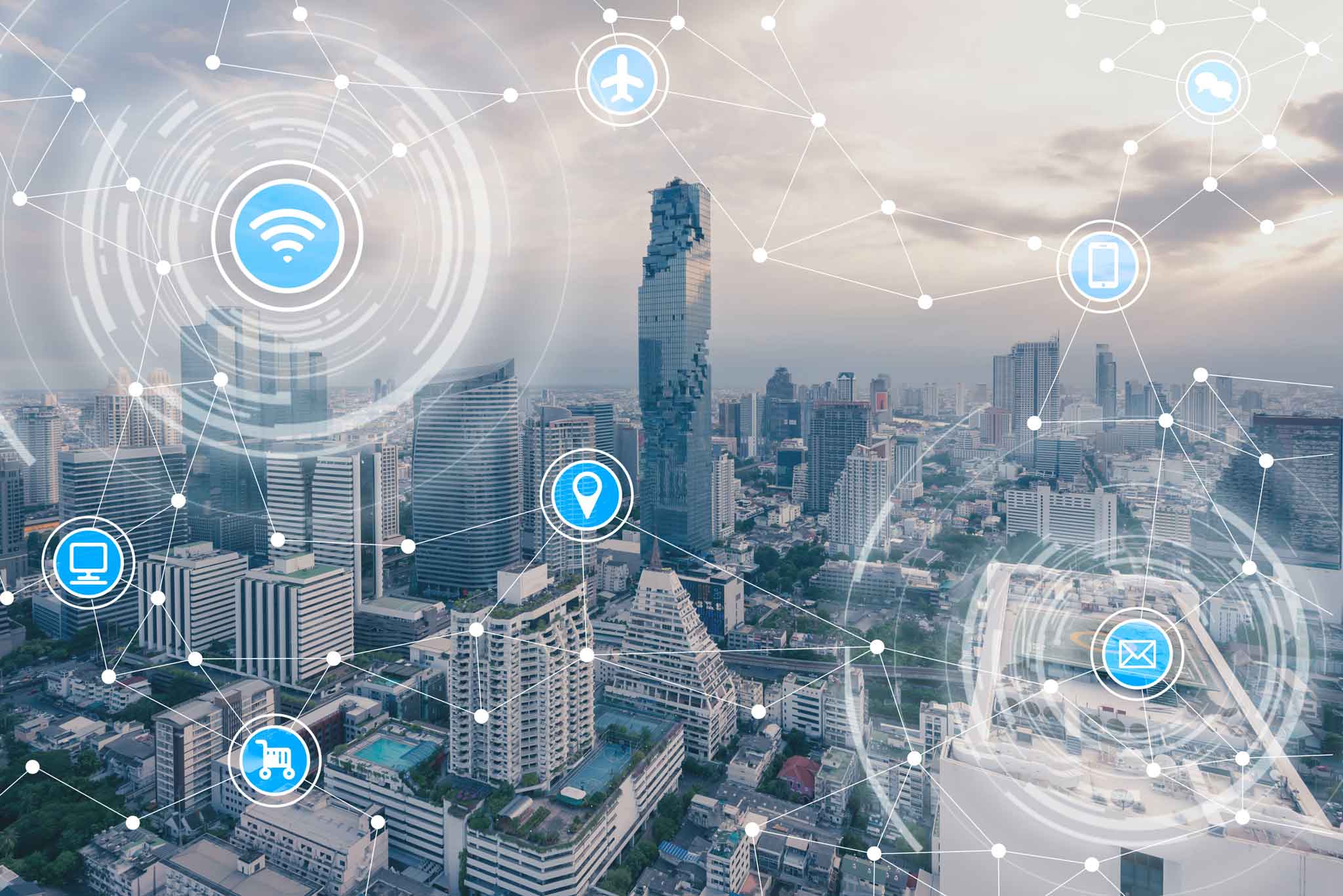Intelligent cities will employ a variety of technological, social and business-oriented approaches to become more sustainable and better places to live in. Fraunhofer IIS experts Nadja Hoßbach, Head of Innovation and Transformation Department, and Karlheinz Ronge, Head of Distributed Systems and Security Department, explain how.
Smart City: How does a city become fit for the future?
August 2, 2022 | #WeKnowHow: Smart Cities and Regions
Smart cities are already a reality in some ways: movie passes on your smartphone, direct interactions with the city council from your laptop, and intelligent route planning for your shopping trip. Arising out of the concepts of smart living, smart energy and environment, smart mobility, smart health, smart government, smart learning and smart economy, we are witnessing the birth of smart cities in which our lives will be more efficient and use less resources.
However, the solutions are not limited to e-government in the city council or to the urban infrastructure, but also incorporate aspects related to how we live, work and get around as well as our utilities, health and education. Scientists at Fraunhofer IIS are integrating smart solutions into our everyday lives. “Transformation support” is the name of the game. “At Fraunhofer IIS, we assume that every city, every region has its own individual challenges. We carry out regional analyses for local authorities, and in doing so we make use of new data sources such as geodata in order to determine the starting situation,” Nadja Hoßbach explains. If a town or metropolis decides it wants to transform itself into a smart city, Hoßbach and Karlheinz Ronge help them develop a digital strategy and identify use cases. With regard to data security, Ronge sees the goal as allowing citizens to manage their data themselves. “Everybody must be able to view and correct their personal data so as to avoid any possible disadvantages that might result from incorrect data.”
There are many different motivations for further advancing smart city projects, including at the European level. For example, intelligent cities make an important contribution to sustainability, develop economically weaker regions and bolster the regional economy. There is still a long way to go, however. When will we live in an almost completely smart world? “That could still take another two decades,” Ronge says.
Karlheinz Ronge has been working on the use of communication technologies and embedded systems for years as they relate to the Internet of Things (IoT). His primary applications focus is on energy management and the automation of distributed systems.
Dr. Nadja Hoßbach did her undergraduate studies and completed a doctorate in business information systems at Friedrich-Alexander-Universität (FAU) Erlangen-Nürnberg. Her department develops management-oriented models and tools for the digital transformation.
